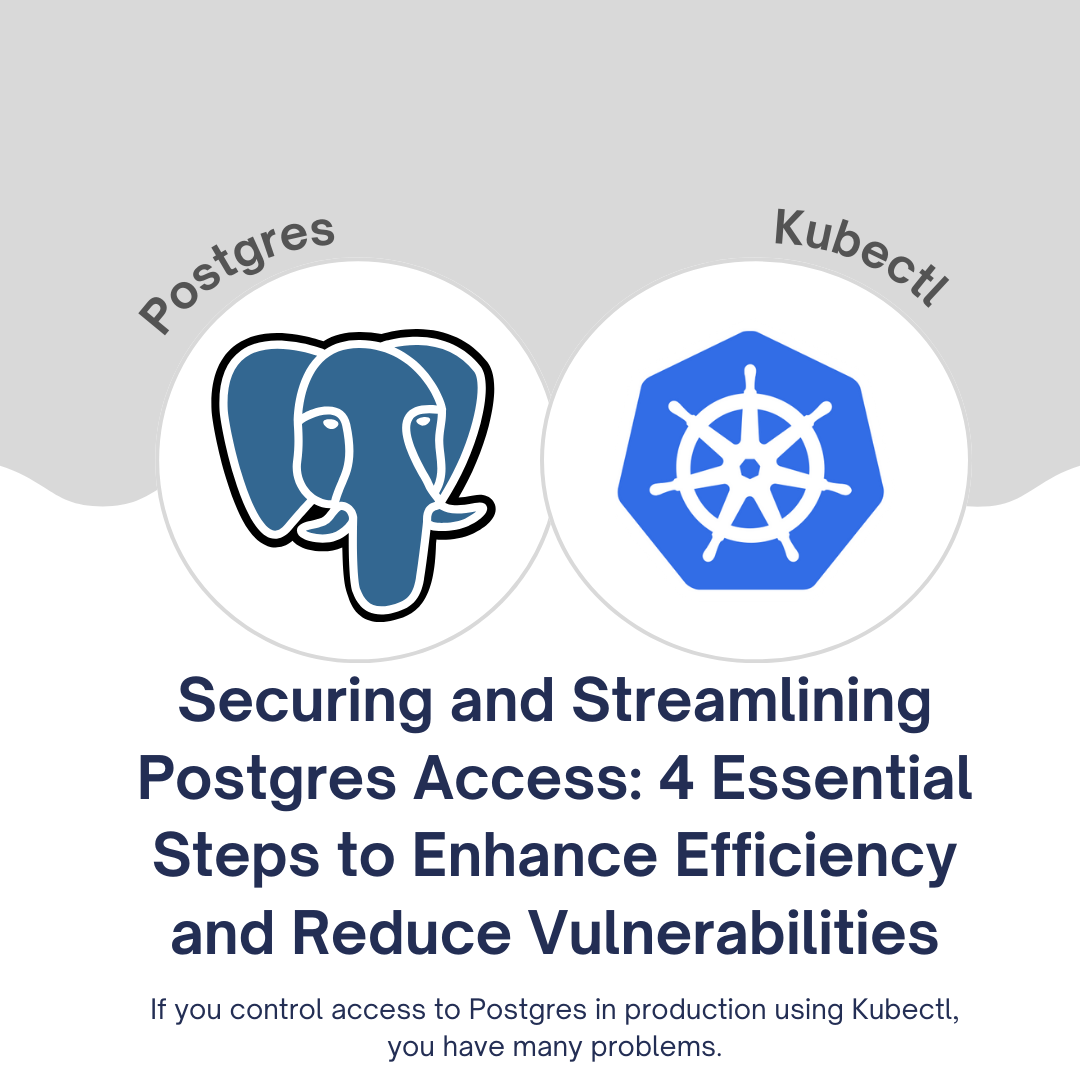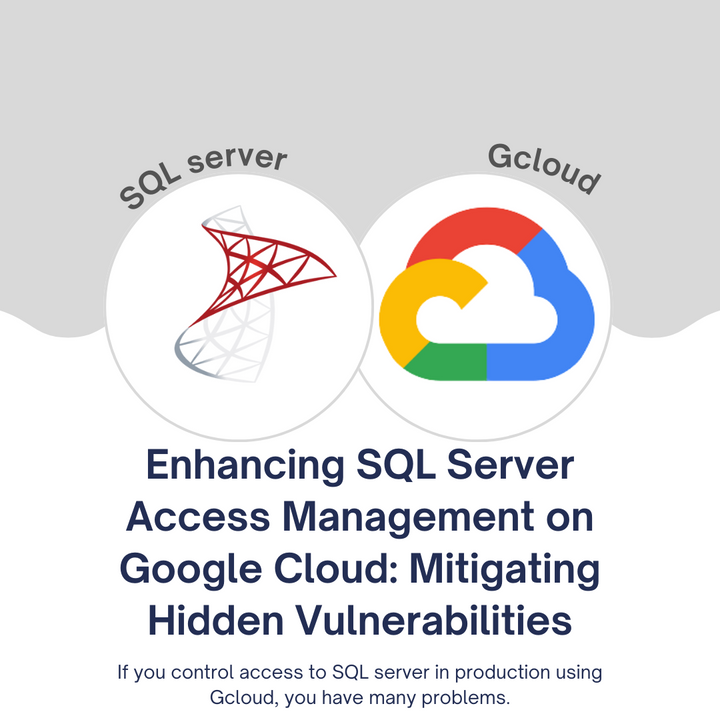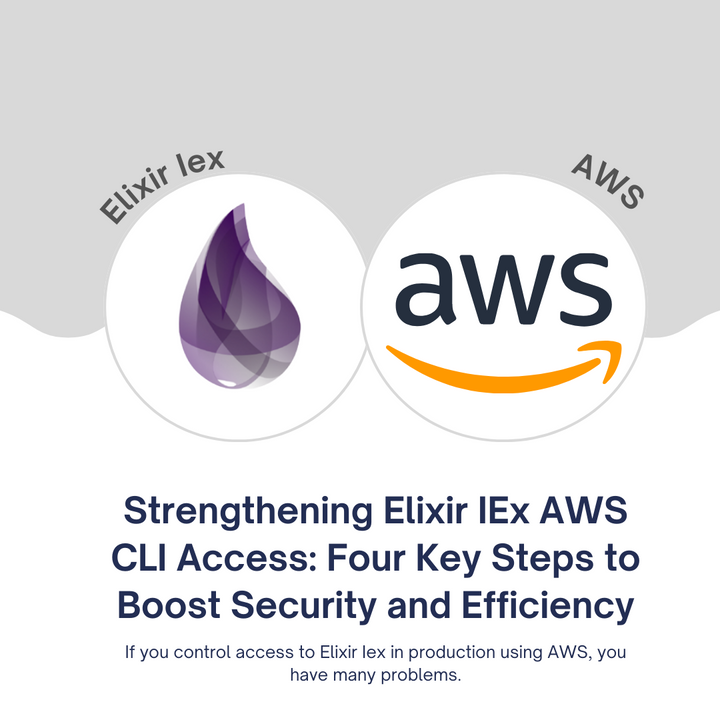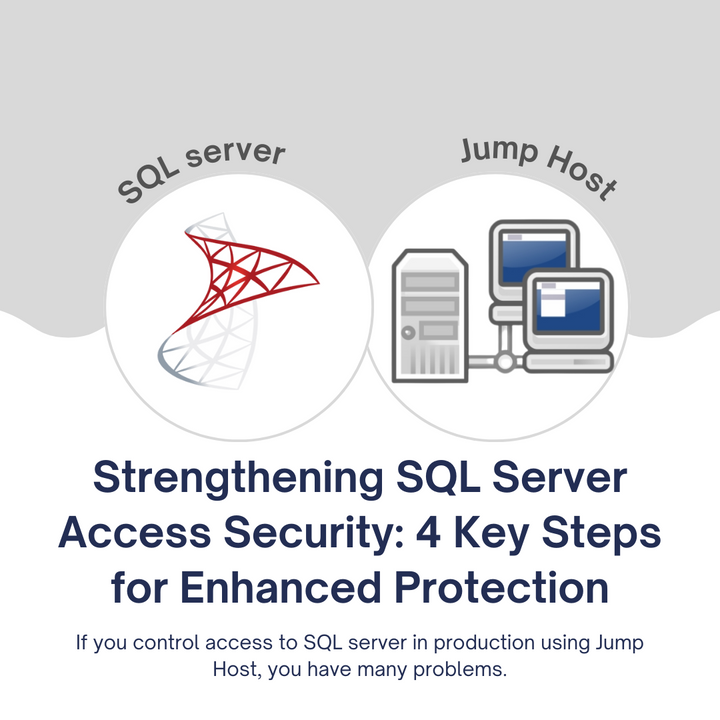Securing and Streamlining Postgres Access: 4 Essential Steps to Enhance Efficiency and Reduce Vulnerabilities

If you control access to Postgres in production using kubectl, you may be facing several issues that could have significant impacts on your operations. In this article, we will delve into the five biggest problems associated with this approach, explore the consequences they create, and provide practical steps to reduce their impacts. We'll also discuss some low-hanging fruits to enhance your Postgres access management.
The Critical Need for Fast Data Access
Fast access to the right engineers in production is crucial for maintaining product speed and ensuring smooth operations. Troubleshooting, bug fixes, and incident resolutions heavily rely on swift and efficient data access. However, many teams grapple with inadequate solutions for granting access, resulting in security risks and inefficient workflows.
The Five Hidden Vulnerabilities of Postgres kubectl Access
When managing Postgres access using kubectl, several hidden vulnerabilities lurk beneath the surface. These vulnerabilities are often overlooked but represent significant attack vectors that can compromise your system's security and compliance. Let's explore them one by one:
1. Single Sign-on & MFA
Implementing Single Sign-on (SSO) and Multi-Factor Authentication (MFA) is essential for bolstering security. Without these features, your system becomes vulnerable to unauthorized access.
2. Audit Trials and PII Protection
Audit trials are crucial for tracking user activities and ensuring the protection of Personally Identifiable Information (PII). Neglecting audit trials can lead to compliance violations and data breaches.
3. Compliance (GDPR, PCI, SOC2, and HIPAA)
Compliance with industry regulations is a must for many businesses. Failure to meet these standards can result in legal issues, fines, and reputational damage.
4. Developer Experience
A smooth developer experience is essential for maintaining productivity. Cumbersome access workflows can hinder developers' efficiency and lead to frustration.
Gradually Mitigating the Vulnerabilities
Now that we've identified the vulnerabilities, let's discuss how to address them using a gradual approach:
Step 1: Add Postgres to Existing Systems
Integrating Postgres into systems you already manage can simplify access control. For instance, if you use Google Workspaces, you don't necessarily need an LDAP directory. Start by incorporating SSO and MFA features into your existing infrastructure.
Step 2: Prioritize Relevant Postgres Access Features
Consider the specific needs of your industry when prioritizing access features. If your focus is on improving developer experience and fast access, concentrate on SSO and MFA. Compliance and audit features should be secondary in industries with fewer regulatory requirements.
Step 3: Leverage Multi-Purpose Solutions
Reduce complexity by consolidating access management for various services and resources. Look for tools that can handle not only Postgres but also databases, cloud providers, Kubernetes, and servers. Having a single tool for all your access needs can streamline operations and reduce management overhead.
Step 4: Add Friction to Unwanted Access Methods
In some cases, it may be necessary to discourage engineers from using suboptimal access methods. By adding a layer of complexity to these methods, you can incentivize the adoption of more secure approaches. For example, if engineers are accessing Postgres through an insecure method, you can introduce a form submission process to make it less convenient. Over time, this can steer them towards the desired, secure access method.
Conclusion
Managing Postgres access through kubectl can pose significant challenges and hidden vulnerabilities. By following these four steps and addressing the specific needs of your organization, you can enhance security, compliance, and developer experience while ensuring efficient data access. Gradual implementation and leveraging multi-purpose solutions can simplify the process, ultimately making the right way the easiest path for your team.



